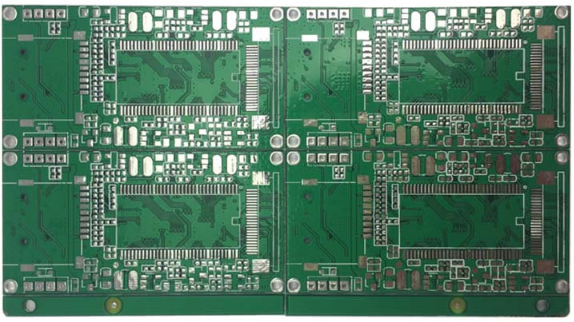In the communication field, different applications have different requirements for PCBs. Generally speaking, FPC and HDI are more used for mobile communication terminals, while rigid PCBs with large areas and high levels are mostly used for communication equipment.
Compared with rigid copper clad laminates, FPC is colloquially called "soft board", and the core layer is generally a flexible substrate such as polyimide (PI) and polyester film. FPC is characterized by lightness, thinness, flexibility, and high wiring, which achieves the integration of component assembly and wire connection. FPC was first used in space shuttles, military equipment and other fields. Because of its lightness, softness, and folding resistance, it quickly penetrated into civilian use at the end of the 20th century. It was mainly used in consumer electronic products such as mobile phones, notebook computers, PDAs, and LCD screens.

HDI is called high-density interconnected printed circuit board. The main feature is to carry more devices and achieve more functions in the smallest possible area. The development of HDI has promoted the development of 2G-5G mobile communication terminals, and has also made high-performance touch-screen mobile phones possible. In addition, HDI is also used in the fields of avionics and military equipment. In 2016, the global HDI board output value reached 7.68 billion U.S. dollars, accounting for 14% of the PCB output value, with a compound annual growth rate of 2.70%.
HDI requires ultra-high wiring density to minimize the space occupied by the motherboard on the smart phone. HDI is made of ordinary core board superimposed and laminated, and it needs to use drilling, hole plating and other processes to realize the connection between any layers.
Therefore, HDI needs to be as thin as possible and multi-layered to greatly increase the density of components and save the wiring area required by the PCB. According to the number of adjacent layers directly connected through blind holes, HDI can be divided into first-order HDI, second-order HDI, high-order HDI, etc. HDI laser drilling and electroplating hole plugs are more difficult and have higher added value.
vehicle electronics
In recent years, PCBs for automotive electronics have remained stable, but driven by intelligent driving and new energy technologies, automobiles are becoming more and more like an electronic product, which is expected to become a new driving force for the development of the PCB industry. It is estimated that between 2017 and 2022, the annual compound growth rate of the automotive electronics PCB market will reach 5.6%.
However, automotive electronics does not have the same obvious generational standards as mobile communication equipment, and the equipment will not be updated periodically. At the same time, the automotive supply chain is relatively closed, such as ADAS systems and new energy vehicle electronic systems that are relatively insensitive to prices, but have extremely high requirements for PCB yield and zero tolerance for quality accidents. Therefore, in the next few years, the market demand for automotive plates is unlikely to have a short-term and explosive growth.
Consumer Electronics
In the past two years, the market size of the PCB industry has declined, mainly due to the attenuation of the driving force of consumer electronics such as PCs, tablets and smart phones. It is an indisputable fact that the traditional consumer electronics market is becoming saturated. Many categories have slowed down or even experienced a decline, which has dragged down the development of the PCB industry. From 2017 to 2022, the growth rate of consumer electronics PCB demand is expected to be 2.5%, which will further weaken the driving force for industry growth.